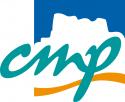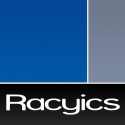UB05 Session 5
Date: Wednesday 21 March 2018
Time: 10:00 - 12:00
Location / Room: Booth 1, Exhibition Area
| Label | Presentation Title Authors |
|---|---|
| UB05.1 | CCF: A CGRA COMPILATION FRAMEWORK Authors: Shail Dave and Aviral Shrivastava, Arizona State University, US Abstract Coarse-grained reconfigurable array (CGRA) can efficiently accelerate even non-parallel loops. Although scores of techniques have been developed in the past decade to map loops on CGRA PEs, several challenges in enabling acceleration of general-purpose applications on CGRAs remained unresolved, in particular, the automatic code generation for the CGRA accelerator coupled with modern processor cores. In this demonstration, we showcase CCF - CGRA compiler framework. CCF is implemented in LLVM 4.0 and includes a set of transformation and analysis passes. We show that given performance-critical loops annotated in embedded applications, how CCF extracts the loop, constructs the data dependency graph (DDG), maps it onto CGRA architecture, off-loads necessary configuration instructions for CGRA PEs, and automatically communicates data between the CPU and CGRA. More information ... |
| UB05.2 | TOPOLINANO & MAGCAD: A DESIGN AND SIMULATION FRAMEWORK FOR THE EXPLORATION OF EMERGING TECHNOLOGIES Authors: Umberto Garlando and Fabrizio Riente, Politecnico di Torino, IT Abstract We developed a design framework that enables the exploration and analysis of emerging beyond-CMOS technologies. It is composed of two powerful tools: ToPoliNano and MagCAD. Different technologies are supported, and new ones could be added thanks to their modular structure. ToPoliNano starts from a VHDL description of a circuit and performs the place&route following the technological constraints. The resulting circuit can be simulated both at logical or physical level. MagCAD is a layout editor where the user can design custom circuits, by placing basic elements of the selected technology. The tool can extract a VHDL netlist based on compact models of placed elements derived from experiments or physical simulations. Circuits can be verified with standard VHDL simulators. The design workflow will be demonstrated at the U-booth to show how those tools could be a valuable help in the studying and development of emerging technologies and to obtain feedbacks from the scientific community. More information ... |
| UB05.3 | OISC MULTICORE STENCIL PROCESSOR: ONE INSTRUCTION-SET COMPUTER-BASED MULTICORE PROCESSOR FOR STENCIL COMPUTING Authors: Kaoru Saso, Jing Yuan Zhao and Yuko Hara-Azumi, School of Engineering, Tokyo Institute of Technology, JP Abstract Subtract and Branch on NEGative with 4 operands (SUBNEG4) is one of One Instruction-Set Computers that execute only one type of instruction. Thanks to its simplicity, SUBNEG4 has only 1/20x circuit area and 1/10x power consumption against MIPS processor. As SUBNEG4 is Turing-complete, it is suitable for parallel computing by multiple cores, while keeping its low-power feature. Our on-going project is seeking for effective use and deployment of SUBNEG4 cores on embedded systems. Our booth will demonstrate the significant speed-up by a SUBNEG4-based many-core processor against a conventional processor, for stencil computing. Our 64-core processor efficiently handles 2D von-Neumann neighborhood stencils, e.g., wave simulation by Verlet integration and 2D Jacobi iteration, to compute 64 points simultaneously. We show that small many-core processors can be realized even with such large number of cores while achieving good speed-up for heaving computation. More information ... |
| UB05.4 | ROS X FPGA FOR ROBOT-CLOUD SYSTEM: ROBOT-CLOUD COOPERATIVE VISUAL SLAM PROCESSING USING ROS-COMPLIANT FPGA COMPONENT Authors: Takeshi Ohkawa, Yuhei Sugata, Aoi Soya, Kanemitsu Ootsu and Takashi Yokota, Utsunomiya University, JP Abstract Distributed processing in robot-cloud cooperative system is discussed in terms of processing performance and communication performance. Cooperation of robots and cloud-servers is inevitable for realizing intelligent robots in the next generation society and industry. To improve processing performance of the cooperative system, we utilize ROS-compliant FPGA component as a robot-side embedded processing for low-power and high-performance image processing. We prepare two demonstrations. (1)Key-point Detection from camera image using Fully-hardwired ROS-Compliant FPGA component In the evaluation, the processing performance of the component is almost same as PC, while it operates at more than 10 times less power (5W), compared to PC (50W). (2)Distributed Visual SLAM using two-wheeled robot (TurtleBot3) Distributed Visual SLAM (Simultaneous Localization and Mapping) are presented as a concrete example of the robot-cloud cooperative system. More information ... |
| UB05.5 | VIRTUAL PROTOTYPE MAKANI: ANALYZING THE USAGE OF POWER MANAGEMENT TECHNIQUES AND EXTRA-FUNCTIONAL PROPERTIES BY USING VIRTUAL PROTOTYPING Author: Sören Schreiner, OFFIS – Institute for Information Technology, DE Abstract My Phd work consists of analyzing the correct usage of power management techniques, as well as the analysis of extra-functional properties, including power and timing properties, in MPSoCs. Especially in safety-critical environments the power management gets safety-critical too, since it is able to influence the overall system behavior. To demonstrate my methodologies a mixed-critical multi-rotor system and its corresponding virtual prototype is used. The multi-rotor system's avionics is served by a Xilinx Zynq 7000 MPSoC. The hardware architecture includes ARM and MicroBlaze cores, a NoC for communication and peripherals. The MPSoC processes the flight algorithms with triple modular redundancy and a mission-critical video processing task. The virtual prototype consists of a virtual platform and an environmental model. The virtual platform is equipped with my measuring tool libraries to generate traces of the observed power management techniques and the extra-functional properties. More information ... |
| UB05.6 | SPANNER: SELF-REPAIRING SPIKING NEURAL NETWORK CONTROLLER FOR AN AUTONOMOUS ROBOT Authors: Alan Millard1, Anju Johnson1, James Hilder1, David Halliday1, Andy Tyrrell1, Jon Timmis1, Junxiu Liu2, Shvan Karim2, Jim Harkin2 and Liam McDaid2 1University of York, GB; 2Ulster University, GB Abstract The human brain is remarkably resilient, and is able to self-repair following injury or a stroke. In contrast, electronic systems typically exhibit limited self-repair capabilities, and cannot recover from faults. We demonstrate a bio-inspired approach to self-repair that allows an autonomous robot to recover from faults in its artificial 'brain'. Astrocytes are support cells in the human brain that interact with neurons to regulate synaptic activity. We have modelled this interaction to create a spiking neural network that can self-repair when synapses between neurons are damaged, by strengthening redundant pathways. We demonstrate a robot platform controlled by a self-repairing spiking neural network that is implemented on an FPGA. We demonstrate that injecting faults into the synapses of the network initially causes the robot to behave erratically, but that the neural controller is able to automatically repair itself, thus allowing the robot to resume normal function. More information ... |
| UB05.7 | EVOAPPROX: LIBRARIES AND GENERATORS OF APPROXIMATE CIRCUITS Authors: Lukas Sekanina, Zdeněk Vašíček and Vojtěch Mrazek, Brno University of Technology, CZ Abstract Our contribution deals with a fully automated functional approximation methodology for combinational digital circuits. We present open libraries of approximate circuits and tools performing desired approximations. Our approach uses a multi-objective genetic programming-based method to automatically design approximate k-bit adders and multipliers (k = 8, 12, 16, 32). All circuits can be downloaded from [1] at the level of a source code (C, Verilog, and Matlab). Several error metrics are pre-calculated and formal guarantees are given in terms of these errors. By means of an interactive web interface the user can easily find the best trade-off between the error and electrical parameters provided for 45/90/180 nm technology process. We will also demonstrate the circuit design flow developed. References: [1] http://www.fit.vutbr.cz/research/groups/ehw/approxlib/ More information ... |
| UB05.8 | REPABIT: AUTOMATED DESIGN OF RELOCATABLE PARTIAL BITSTREAMS Authors: Jens Rettkowski1 and Diana Göhringer2 1Ruhr-University Bochum, DE; 2Technische Universität Dresden, DE Abstract Dynamic partial reconfiguration of FPGAs enables the replacement of hardware modules at runtime without disturbing remaining hardware modules. The standard vendor tools generate a specific partial bitstream for each reconfigurable region. Relocation generates a partial bitstream in such a way, that it can be moved to different regions. Hence, the number and the time to generate bitstreams is reduced. In this work, RePaBit is presented that automates the generation of relocatable partial bitstreams for Xilinx Vivado. TCL scripts check the compatibility of resource footprints and arrange identical partition pins in all regions for the connection of relocatable modules with the remaining design. Feedthrough routes are avoided using the isolation design flow from Xilinx. The results show an overhead of LUTs by 0.7% and a frequency reduction of only 1.5%. Nevertheless, RePaBit simplifies the design and reduces the design time as well as the needed memory for storing the partial bitstreams. More information ... |
| UB05.9 | CIJTAG: CONCURRENT IJTAG DEMONSTRATOR Author: Krenz-Baath René, Hamm-Lippstadt University of Applied Sciences, DE Abstract The flexibility of on-chip instrument access enabled by IEEE 1687 (IJTAG) has shown tremendous improvements in modern industrial designs. Due to a constantly increasing spektrum of tasks performed through 1687 networks such as performing test operations during production test, on-line test operations as well as operating health monitors the test requirements in modern designs increase dramatically with respect to test performance, responsiveness and low power. These requirements have a major impact on the design of such test infrastructures. In complex designs with large test infrastructures it might be challenging to comply with the large spectrum of requirements. Concurrent IJTAG is novel partitioning concept to a reconfigurable test infrastructure in order to enable an independent operation of different sections of the test infrastructure. The proposed demonstrator shows the first FPGA-based implementation of concurrent IJTAG test infrastructures. More information ... |
| UB05.10 | EXPERIENCE-BASED AUTOMATION OF ANALOG IC DESIGN Authors: Florian Leber and Juergen Scheible, Reutlingen University, DE Abstract While digital design automation is highly developed, analog design automation still remains behind the demands. Previous circuit synthesis approaches, which are usually based on optimization algorithms, do not satisfy industrial requirements. A promising alternative is given by procedural approaches (also known as "generators"): They (a) emulate experts' decisions, thus (b) make expert knowledge re-usable and (c) can consider all relevant aspects and constraints implicitly. Nowadays, generators are successfully applied in analog layout (Pcells, Pycells). We aim at an entire design flow completely based on procedural automation techniques. This flow will consist of procedures for the generation of schematics and layouts for every typical analog circuit class, such as amplifier, bandgap, filter a.s.o. In our presentation we give an overview on such a design flow and we show an approach for capturing an analog circuit designer's strategy as an executable "expert design plan". More information ... |
| 12:00 | End of session |
| 12:30 | Lunch Break in Großer Saal and Saal 1
On all conference days (Tuesday to Thursday), coffee and tea will be served during the coffee breaks at the below-mentioned times in the exhibition area (Terrace Level of the ICCD). Lunch Breaks (Großer Saal + Saal 1)On all conference days (Tuesday to Thursday), a seated lunch (lunch buffet) will be offered in the rooms "Großer Saal" and "Saal 1" (Saal Level of the ICCD) to fully registered conference delegates only. There will be badge control at the entrance to the lunch break area. Tuesday, March 20, 2018
Wednesday, March 21, 2018
Thursday, March 22, 2018
|











